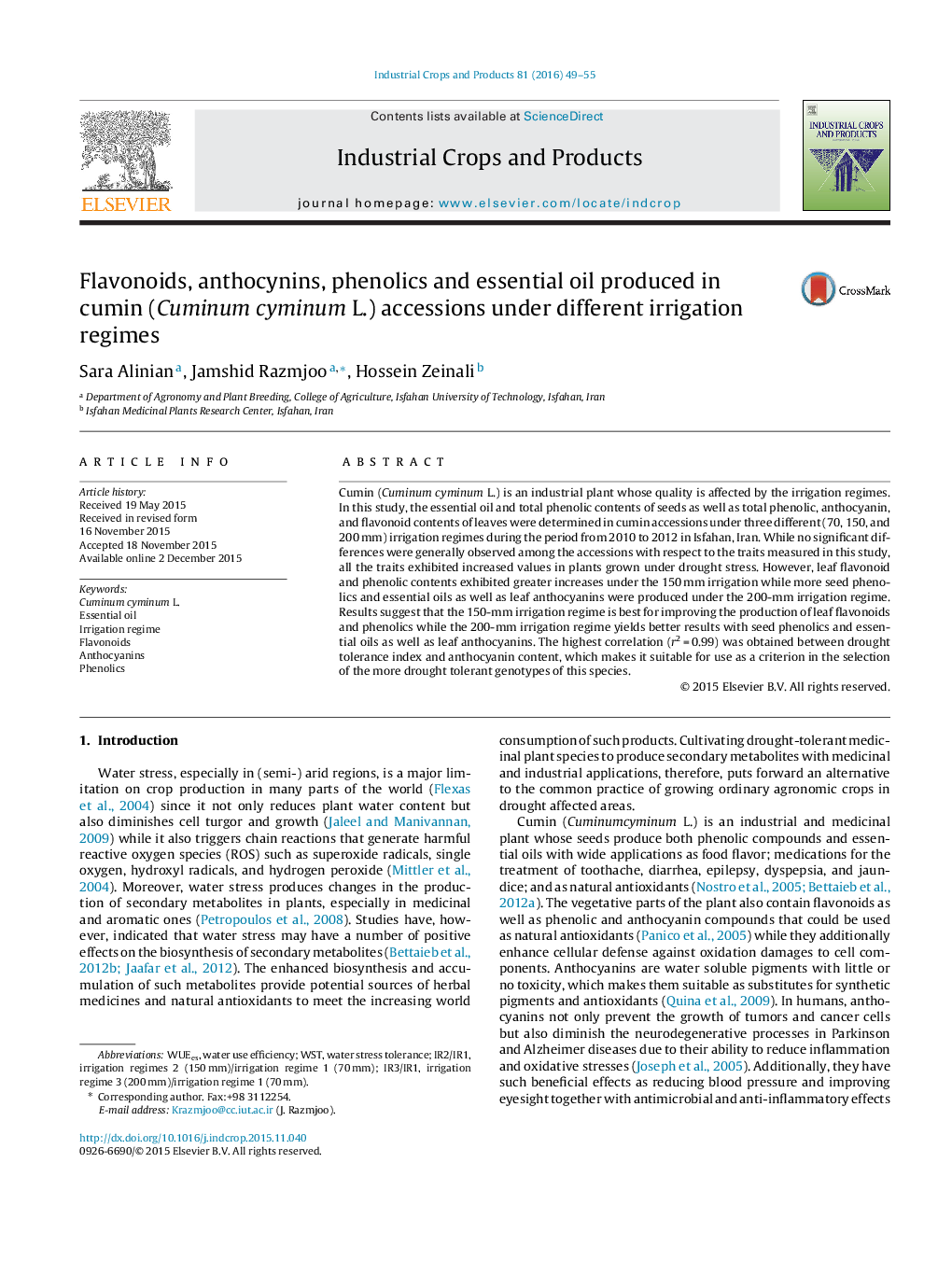| کد مقاله | کد نشریه | سال انتشار | مقاله انگلیسی | نسخه تمام متن |
|---|---|---|---|---|
| 4512434 | 1624829 | 2016 | 7 صفحه PDF | دانلود رایگان |

• Different level of irrigation regimes was examined to understand efficient irrigation regimes under condition of this research for industrial uses.
• Leaf flavonoids and phenolics contents may be produced under 150 mm irrigation regime.
• High seed phenolics contents, essential oils and leaf anthocyanins contents may be produced under 200 mm irrigation regimes.
Cumin (Cuminum cyminum L.) is an industrial plant whose quality is affected by the irrigation regimes. In this study, the essential oil and total phenolic contents of seeds as well as total phenolic, anthocyanin, and flavonoid contents of leaves were determined in cumin accessions under three different (70, 150, and 200 mm) irrigation regimes during the period from 2010 to 2012 in Isfahan, Iran. While no significant differences were generally observed among the accessions with respect to the traits measured in this study, all the traits exhibited increased values in plants grown under drought stress. However, leaf flavonoid and phenolic contents exhibited greater increases under the 150 mm irrigation while more seed phenolics and essential oils as well as leaf anthocyanins were produced under the 200-mm irrigation regime. Results suggest that the 150-mm irrigation regime is best for improving the production of leaf flavonoids and phenolics while the 200-mm irrigation regime yields better results with seed phenolics and essential oils as well as leaf anthocyanins. The highest correlation (r2 = 0.99) was obtained between drought tolerance index and anthocyanin content, which makes it suitable for use as a criterion in the selection of the more drought tolerant genotypes of this species.
Journal: Industrial Crops and Products - Volume 81, March 2016, Pages 49–55